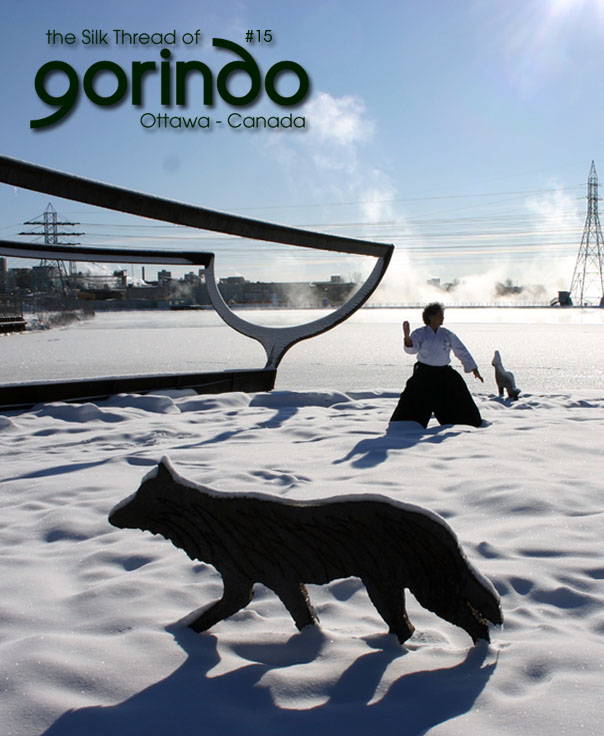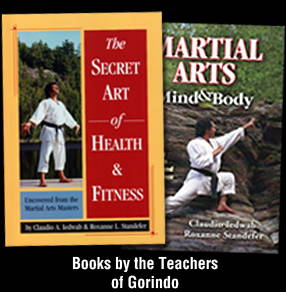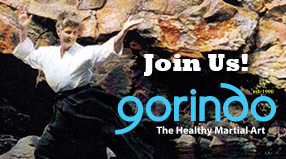The Silk Thread of Gorindo - Ottawa - Canada
Issue 15
Photo cover "Claudio Iedwab at -20°C - Ottawa River" by Roxanne Standefer sensei, 29th December 2011.The Sculpture owned by the NCC is called Boat Sight by John McEwen (1984).
The boat (representing culture) comes in to shore and the wolves (representing Nature) are curious and cautious. The location is the voyageur portage around the Chaudiére Falls in Hull, Quebec.
Glossary of Terms
 A
A
Arigato: Thank you.
B
Budo: Martial ways.
Budoka: Martial artist.
C
Choku-zuki: A direct thrust or blow. Straight punch.
Chudan choku-zuki: Straight punch to the body.
Chudan gyaku-zuki: Middle reverse punch.
Chudan oi-zuki: Middle punch.
Chudan uchi-uke: Middle inside outward block.
Chudan: Middle section of the body. Middle. Chest area.
D
Dachi: Stance.
Dan: Black belt degree or rank. Senior; grade.
Do: Way (philosophic concept).
Dojo: A training hall. Way place. Place to learn the Do.
Domo Arigato: Thank you.
G
Gedan choku-zuki: Straight punch to groin.
Gedan-barai: Lower parry. Low block.
Gedan: Lower. The lower part of the body.
Gi or Keikogi: The training uniform.
Gorindoka: One who trains in Go Rin Do.
Go: Five.
Gyaku-zuki: Reverse punch.
H
Hajime: Start or begin.
Hara: The abdominal region encompassing the vital energy, ki, or a state of mind in the development of one’s character. Vital center. Lit. belly.
Heiko-dachi: Parallel stance.
Heisoku-dachi: Closed feet stance. Formal attention stance (feet together pointing forward).
Hidari: Left.
J
Jodan choku-zuki: Upper straight punch.
Jodan: High. Face area.
Joseki: Upper side of the dojo. Right facing forward.
K
Keiko: Training.
Keikogi: Training uniform.
Ki: The intrinsic energy, vital spiritual energy, emanating from the hara, and all living things.
Kiai: Audible expression of one’s energy level. Sound originating from the hara. Lit. union of spirit.
Kiba-dachi: Horse stance.
Kihon: Basic exercise.
Kime: Focus.
Kiotsuke: Attention.
Kiritsu: Stand up.
Kokutsu-dachi: Back stance.
Kyu: Colour belt stages.
M
Mate: Stop. Freeze action.
Migi: Right.
Mokuso: Meditation; contemplation; reflection.
Mudansha: Ungraded. The colour belt practitioners.
N
Nyuanshin: Yielding heart, receptive mind.
O
Obi: Belt.
R
Rei: Bow.
Reishiki: Dojo etiquette.
Rin: Circles, spheres, relations.
Ritsurei: Standing bow.
S
Seiza: Sitting correctly - to sit quietly.
Sempai: Senior student, assistant to the Sensei.
Sensei ni rei: Bow to sensei.
Sensei: Teacher. One who has gone this way before.
Shimoseki: Lower side of the dojo. Left facing forward.
Shimoza: Lower seat of the dojo.
Shirushi: Mandala, emblem or symbol.
Shomen: The front of the dojo.
Shuto: Knife hand.
T
Tanren: To forge discipline.
U
Uchi-uke: In-outside block.
Uke: Block or defensive action.
Uwagi: Jacket of the gi.
W
Waza: Technique.
Y
Yame: Stop.
Yoi: Ready.
Yudansha: Graded. The black belt practitioners.
Z
Zarei: Bow from seiza.
Zazen: Zen meditation. Sitting meditation.
Zenkutsu-dachi: Forward stance.
Zubon: Pants of the gi.
Counting
1: Ichi
2: Ni
3: San
4: Shi
5: Go
6: Roku
7: Shichi
8: Hachi
9: Ku
10: Ju
by Claudio Iedwab & Roxanne Standefer
Originallly published in the Gorindo Student Manual by Claudio Iedwab & Roxanne Standefer
©2011 Illustration by Claudio Iedwab
« Click the Subscribe link on the left





